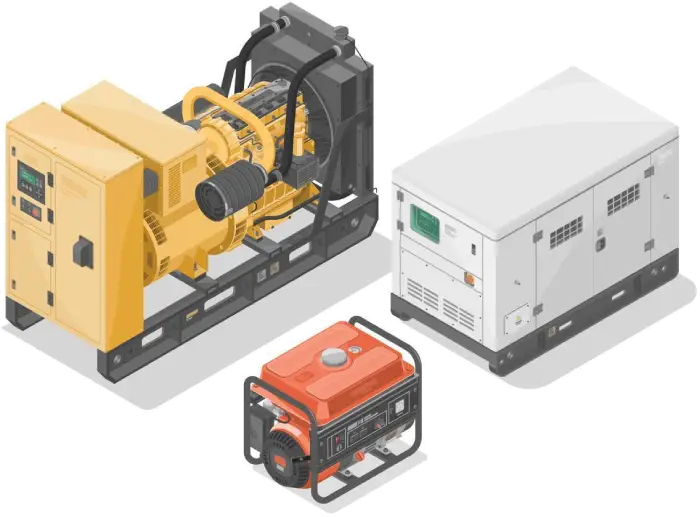The future of industrial e-commerce with 3D visualization using AR and VR

Traditionally, industrial companies have relied on customer support teams, manuals, and static documentation to provide aftersales services for heavy machinery and specialized tools. However, these traditional methods often fail to deliver the depth of interaction required for efficient long term maintenance and problem-solving.
Luckily 3D, AR, and VR are no longer the technologies of tomorrow—they are here today, reshaping how industrial companies manage their aftersales services offering unprecedented levels of support, training, and customer engagement.
Understanding 3D, AR, and VR in Industrial E-Commerce:
1. What is 3D Visualization?
3D technology enables users to visualize machine models in three dimensions, allowing them to rotate, zoom, and explore every detail of the product and view the specific parts of the machine
How does it help in aftersales?
In an industrial setting, this means that users can visualize spare parts, equipment, or specific machine components after purchase. If a customer needs a replacement or maintenance, 3D models can help them visually identify which parts need to be replaced..
This reduces the likelihood of incorrect part orders, customer returns, enhances customer confidence, improves customer relations and ensures smoother maintenance.
2. What is Augmented Reality (AR)?
Augmented Reality overlays digital information onto the real world, allowing users to view digital images or data superimposed over their physical environment.
How does it help in aftersales?
In aftersales, AR can provide real-time, interactive troubleshooting. For example, a technician can point their device at a malfunctioning machine, and AR will display step-by-step repair instructions directly onto the equipment, highlighting specific areas or parts that need attention.
This speeds up repair times, minimizes mistakes, and reduces the need for expensive, time-consuming service calls.
3. What is Virtual Reality (VR)?
Virtual Reality creates immersive, virtual environments that simulate real-world conditions, allowing users to interact with products or environments as if they were physically present.
How does it help in aftersales?
VR is particularly effective for training in complex industrial operations. Technicians can engage in virtual maintenance training for new equipment, learning in a risk-free environment.
This boosts their confidence, enhances their skills, and reduces operational downtime caused by mishandling or accidents.
Why 3D, AR, and VR matter in After-sales via Industrial E-commerce?
While 3D, AR, and VR have already proven their value in the pre-sales phase, the real potential lies in their impact on aftersales services. Industrial manufacturers can leverage the power of these technologies to provide more intuitive and effective solutions post-purchase, minimizing downtime, reducing maintenance costs, and improving user experiences.
Maintenance and Troubleshooting with AR to solve issues in real-time
Augmented Reality (AR) is a blessing for post-sales maintenance support. Instead of relying on static instruction manuals, AR allows for real-time, interactive troubleshooting. Imagine a service technician needing to replace a machine part or address a malfunction—AR can overlay step-by-step instructions directly onto the physical equipment, highlighting specific areas, parts, or components in need of attention.
This approach speeds up repairs and minimizes user error, cutting downtime dramatically.
Virtual Training Environments to empower Technicians with VR
For organizations with complex machinery, providing thorough operator training has always been a challenge. With VR-based training modules, technicians and operators can learn to handle equipment in a risk-free, virtual environment that simulates real-world conditions. VR allows workers to experience various scenarios, practice maintenance procedures, and troubleshoot without any disruption to actual operations.
This technology enhances the learning process and increases confidence, resulting in fewer operational mistakes and increased machine uptime.
3D Visualization for Spare Parts and Custom Solutions
One of the primary challenges in providing great after-sales service is to ensure that customers have the right spare parts or components for their specific needs. Through 3D visualization, customers can view, rotate, and explore parts in detail before purchasing replacements. They can even customize components to fit their exact machine model or operational requirements.
This not only enhances customer satisfaction but also helps organizations reduce the risk of incorrect part orders and returns.

The Future Trends in 3D/VR/AR for Industrial E-Commerce are exciting. While the potential of 3D, VR, and AR is already impressive, the future holds even greater promise.
- AI-Driven Immersion: We’re on the cusp of AI and immersive technologies merging to provide intelligent, adaptive experiences. Imagine an AR tool that learns from a customer’s preferences, automatically suggesting product configurations or enhancements that suit their unique needs.
- IoT and AR Integration: As more industrial products become connected via the Internet of Things (IoT), the integration with AR will allow for real-time data visualization. Picture seeing live data from an industrial machine directly overlaid via AR, giving users insights and alerts in real time. The scope is immense and not leveraging the benefits could stagnate the growth journey.
After-sales as a Growth Opportunity
At Industrility, we believe that aftersales should not be an afterthought—it’s a key driver of customer loyalty and revenue growth. By integrating 3D, AR, and VR technologies into your aftersales strategy, your business can create new opportunities for customer engagement.
From interactive maintenance support to virtual operator training, these tools offer a path to not only reduce operational inefficiencies but also uplift the customer experience to an entirely new level.
Aftersales is more than just support—it’s an extension of the customer relationship. At Industrility, we help businesses leverage these technologies to stay ahead, offering value-driven, experience-focused strategies that turn aftersales into a competitive advantage.
Begin Your Journey of Transformation
I've read enough! How Can I Enhance My After-sales Game?
Schedule an 18 min call to discover possibilities
